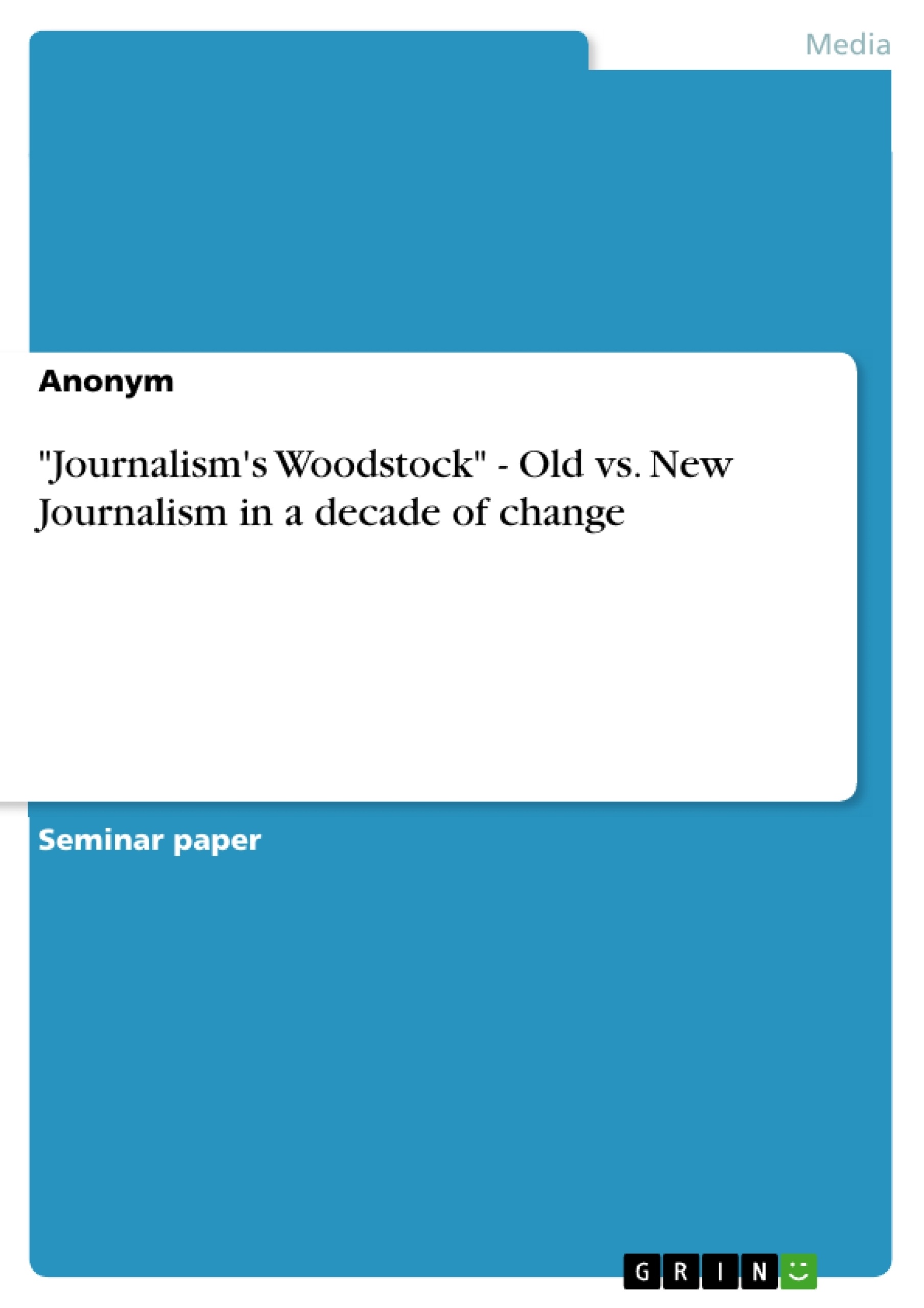New Journalism caused a sensation in the turbulent 1960s when young American writers – both journalists and novelists – began to blur the lines between fact and fiction. The traditional rules defining journalism and literature did not exist anymore – at least in the heads of many new journalists. Tom Wolfe, Truman Capote, Norman Mailer, Joan Didion, and Hunter S. Thompson were only a few of many representatives who raised a heated discussion about the obligation to be objective in print journalism. Notwithstanding, the turning away from the impersonal, almost clinical news journalism and the shift towards an authentic, emotional, yet nonfictional style of writing reflected the atmosphere of the 60s and 70s in America.
The paper sets out to explore the phenomenon of New Journalism, its techniques, as well as its meaning within the decade of its emergence. In order to give an insight into the self-conception of New Journalists, their research strategies will be explained exemplarily. Furthermore, traditional journalistic techniques will be further elaborated and compared to those of New Journalism. How do newspaper journalists work and write? What principles underlie their writing and how did these rules evolve in the first place? Chapter 2 gives answers to these questions. Finally, claiming objectivity to be the absolute when it comes to representing the truth, is questionable. Rather, both Old and New Journalism can sensibly complement each other.
Inhaltsverzeichnis (Table of Contents)
- Introduction
- Old Journalism
- Brief History
- Basic Principles of News Writing
- The Conservative Journalist
- Criticism
- New Journalism
- History and Origins
- Characteristics
- The New Journalist
- Criticism
- Conclusion
Zielsetzung und Themenschwerpunkte (Objectives and Key Themes)
This paper explores the emergence and development of New Journalism in the 1960s and 70s. It analyzes the techniques used by New Journalists, comparing them to traditional journalistic practices. The paper aims to provide insights into the self-conception of New Journalists and the cultural context that shaped their writing style.
- The evolution of news writing styles from the 18th century to the present
- The impact of technology on journalistic practices
- The rise of New Journalism as a response to traditional journalistic objectivity
- The techniques and characteristics of New Journalism
- The relationship between journalism and literature
Zusammenfassung der Kapitel (Chapter Summaries)
- Introduction: The introduction introduces the concept of New Journalism as a movement that blurred the lines between fact and fiction, challenging traditional journalistic norms. It highlights the key figures of New Journalism and the socio-cultural context of the 1960s and 70s in America.
- Old Journalism: This chapter explores the history of American news writing from the 18th century onwards, focusing on the evolution of journalistic practices influenced by technological advancements such as the printing press, the telegraph, and the typewriter. It outlines the basic principles of traditional news writing, including the inverted pyramid structure and the emphasis on objectivity.
Schlüsselwörter (Keywords)
Key terms and concepts explored in this paper include New Journalism, Old Journalism, objectivity, subjectivity, literary journalism, factual reporting, narrative techniques, cultural context, American journalism, history of news writing, technological influence, and the 1960s counterculture.
- Quote paper
- Anonym (Author), 2007, "Journalism's Woodstock" - Old vs. New Journalism in a decade of change, Munich, GRIN Verlag, https://www.grin.com/document/83127



